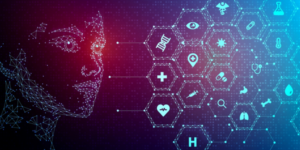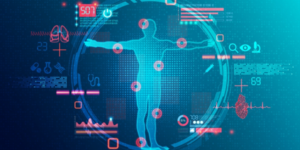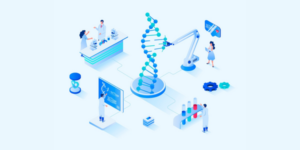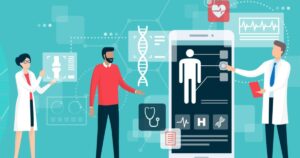27 Jul
Access to high-quality healthcare is everyone’s fundamental right. This shouldn’t be restricted by one’s place of residence. Yet many rural residents frequently feel as though they are unable to exercise this prerogative. Rural areas face particular difficulties in receiving medical treatment, contributing to the continuous urban-rural health gap. However, there is a ray of light in the form of Artificial Intelligence (AI), an advancement in technology that is showing promise as a way to bridge the healthcare gap.
The Urban-Rural Health Gap:
Living in a rural area undoubtedly has its perks – the fresh air, serene landscapes, and close-knit communities are appealing. However, when it comes to healthcare, rural residents often face considerable challenges. These challenges can include long distances to the nearest healthcare facility, a shortage of healthcare professionals, and limited access to specialised medical services. The result is that rural populations frequently experience health disparities when compared to their urban counterparts.
AI to the Rescue: Artificial Intelligence, though it may sound complex, is essentially a set of smart tools and systems that can help solve problems. In healthcare, AI is becoming a valuable ally in addressing these rural-urban health disparities.

Telemedicine: Telemedicine, powered by AI, is revolutionising healthcare access in rural areas. Imagine being able to have a virtual doctor’s appointment from the comfort of your home. AI facilitates remote consultations, enabling healthcare professionals to provide medical advice and even prescribe medications without the need for a physical visit. This means that people in rural areas can seek medical guidance without the time and expense of traveling to a city.

Remote Monitoring using AI: AI-driven devices like wearables can track your vital signs and send this information to healthcare providers in real-time. This is particularly valuable for those with chronic conditions or the elderly. Remote monitoring can help detect health issues early and ensure timely interventions, without requiring frequent visits to the clinic.

Health Data Analysis: AI can analyze patient data and identify health trends, which can be particularly useful in rural areas where access to medical specialists may be limited. This data analysis can help doctors make more informed decisions about treatments and care plans.

Efficient Health Management: AI can streamline administrative tasks in healthcare, making it easier for healthcare providers in rural areas to manage their practices. This includes appointment scheduling, billing, and managing patient records. Less time spent on administrative tasks means more time available for patient care.

Access to Specialised Care: In rural areas, it can be challenging to access specialised medical services. AI can help bridge this gap by facilitating remote consultations with specialists located in urban centres. This means that rural patients can benefit from expert opinions without having to travel long distances.
Challenges to Overcome:
While AI has the potential to bridge the urban-rural health divide, there are challenges that need to be addressed:
Digital Divide: Rural areas may have limited internet access and technology infrastructure. To benefit from AI in healthcare, there must be efforts to improve digital connectivity in these regions.
Privacy Concerns: As AI collects and analyzes health data, there are concerns about patient privacy. It’s crucial to ensure that robust data security measures are in place to protect sensitive medical information.
Cultural and Trust Barriers: Patients in rural areas may be hesitant to embrace AI-driven healthcare solutions due to cultural or trust-related factors. Educating communities about the benefits of AI and building trust in these technologies is essential.
Regulatory Hurdles: Ensuring that AI-driven healthcare complies with regulations and standards is vital. Regulatory frameworks need to adapt to the changing healthcare landscape while ensuring patient safety.
The Human Touch:
While AI in healthcare offers numerous advantages, it’s important to remember that technology can’t replace the human touch in medicine. Healthcare is not just about diagnosis and treatment; it’s also about empathy, understanding, and the doctor-patient relationship. The ideal future of healthcare is one where AI complements human healthcare professionals, making healthcare more accessible and efficient without compromising on the care patients receive.

The Promise of Equitable Healthcare:
AI has the potential to bring a positive change to rural healthcare. It can bridge the urban-rural health divide by providing access to medical expertise, reducing the burden of long travel distances, and making healthcare more efficient. In rural communities, the promise of AI lies in the ability to offer healthcare services that are both high in quality and widely accessible. By embracing these technologies, we can hope to see a future where geography is no longer a barrier to receiving the healthcare we all deserve.

